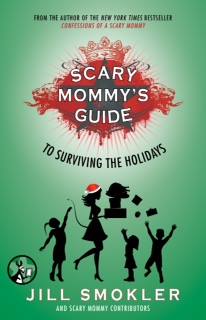Just after Halloween, I had an inkling that a problem was emerging. By Thanksgiving, it had become noticeable. As Christmas neared, it could no longer be ignored. I was gaining weight at an alarming rate.
How could I have gained so much weight during the holiday season? Usually I don’t make excuses, but this time I can honestly say I had no control over the situation. It wasn’t my fault. It crept up on me a little at a time. No, I’m not talking about excessive holiday indulgence. By the time Christmas arrived, I had received nearly 40 pounds of catalogs in the mail.
The day after Halloween, five catalogs arrived in the mail. As I stood in our foyer weeding out the junk mail, Oregano said, “I’ve never even heard of some of these companies. For fun, why don’t we save all the catalogs we get between now and Christmas?”
“I’m not sure I’d classify that as fun, but it would be interesting to see what kinds of catalogs we get. This one is addressed to the shipping department manager. Is that me or you?” I laughed while waving a giant catalog offering packing peanuts, bubble wrap and boxes of all sizes.
And so it began. Each day I checked the mailbox. It was rare to find only one catalog. Before long, we had made a tower on the hall table and when that started to teeter, we created a second one. Just before Christmas, our cat stepped on the shorter tower of catalogs and sent them cascading to the floor. We decided it was time to end our experiment before someone needed medical attention.
We picked up the fallen catalogs and began stacking them on the floor. It was an impressive collection of junk mail.
“Look! It comes all the way up to your knees!” Oregano marveled.
“I wonder how much all of this weighs?” I said as I went to get the scale.
Very carefully, we transferred the pile of slippery, glossy pages; 38.5 pounds! Always the statistician, Oregano decided to catalog our catalogs. In all, there were 156 catalogs from 86 different companies. Some of them were from retailers we had shopped at previously, but most were not.
Thanks to this excessive show of convenient commercialism, I could enjoy the holidays without all the fuss of ever going to a store. Using the catalogs, I could dress myself in a complete outfit starting from the Spanx on up. Continuing my mail order shopping spree, I could accessorize that outfit with shoes, jewelry and handbags. Without ever leaving my home, I could furnish and decorate it completely. As long as I’ll have a snazzy, new outfit and a cozy home, I should have a holiday party. No need to leave the house to get the supplies. With catalogs offering cheese, fruit, meat, tea and flour, I could order everything I’d need; from the food I’d be serving to the appliances I’d be using to prepare it. After my busy schedule of entertaining, I will need to unwind using the luxury bath soaps and snuggly pajamas delivered to my doorstep. With all these catalogs at my disposal, I could lead a full life without ever leaving the comfort of my home.
This vast assortment of catalogs would make it a pleasure to shop for everyone on our list. For the people who always return their gifts or for the person who has everything, we have a catalog that would allow us to give their gifts to someone else. For $850, we could buy a camel in their honor and donate it to a family in a developing country. That seemed pricey, but having never done any comparative shopping for camels, I have no idea how much they go for these days. While this is an intriguing idea, it does leave me with some questions, not the least of which is just how do they ship a camel? Does it ride along in the mail truck or do they make it walk to its final destination? Hopefully the costs are not determined by weight unless they offer free shipping.
For those of us with generous spirits and smaller paychecks, there are animals at lower price points. Compared to the camel, a $500 heifer seems like a bargain. Sure, you can’t ride a heifer through the desert, but you can get milk. The always versatile pigs, goats and sheep would set us back $120 each. The most affordable animals to give are honeybees. I can just imagine the smiling faces of the recipients as they open a box filled with bees.
I didn’t order anything from these catalogs. With the exception of the catalog filled with farm animals, I didn’t even thumb through them to browse the merchandise. They were a total waste of resources from the paper they were printed on to the fuel needed to transport them. But, I will say this; it was a satisfying feeling to drop all that holiday weight – right into the recycling bin.









